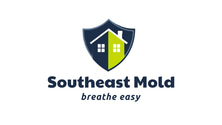How to Identify Mold in Your Home (And Why It Matters)
Mold is more than just an unsightly problem—it can be a silent threat to your home and your health. But before you can address it, you have to know how to spot it.
Southeast Mold
5/28/2025


How to Identify Mold in Your Home (And Why It Matters)
Mold is more than just an unsightly problem—it can be a silent threat to your home and your health. But before you can address it, you have to know how to spot it. Whether you're concerned about a musty smell or trying to determine if that patch in the corner is mold or mildew, learning how to identify mold early is key to preventing damage and protecting your family.
In this post, we’ll cover the most common signs of mold, how to distinguish mold vs. mildew, and when it’s time to call in a professional.
Detection Methods: How to Spot Mold in Your Home
Mold can grow anywhere there’s moisture—and it often hides in places you can’t easily see. But there are telltale signs you can watch (and smell) for:
Common Signs of Mold:
Musty Odors
One of the earliest warning signs of mold is a persistent, damp, musty smell—similar to wet socks or rotting wood.Visible Discoloration
Mold can appear in many colors: black, green, gray, white, or even orange. It might look fuzzy, slimy, or powdery, and can show up on walls, ceilings, floors, and furniture.Moisture or Water Damage
Mold thrives in damp environments. Areas that have experienced leaks, flooding, or condensation are high-risk zones. Check under sinks, around windows, near HVAC units, and in basements.Peeling Paint or Bubbling Wallpaper
These could indicate trapped moisture behind your walls—an ideal environment for hidden mold growth.Health Symptoms
If you or your family are experiencing chronic allergy symptoms like coughing, sneezing, or eye irritation that improve when you leave the house, mold might be the culprit.
Mold vs. Mildew: What’s the Difference?
Mold and mildew are often confused, but they’re not the same—and knowing the difference is important for proper treatment.
FeatureMoldMildewColorBlack, green, gray, or blueWhite, gray, or yellowTextureFuzzy or slimyPowdery or fluffyDepthGrows deeper into surfacesGrows on the surfaceDamageCan cause structural damage and health issuesPrimarily cosmetic damageOdorStrong musty smellMild odor or none at all
While mildew typically grows on shower walls or window sills and can often be removed with household cleaners, mold is more aggressive and requires professional remediation, especially if it's widespread or hidden.
When to Call a Professional
If you suspect mold but can’t see it—or you’ve tried cleaning a patch and it keeps coming back—there may be a larger infestation behind the scenes. At that point, it’s time to call in experts for an inspection.
Professional mold specialists can:
Test for hidden mold in walls and air ducts
Identify the type of mold present
Safely remove the mold without spreading spores
Address moisture sources to prevent future growth
Your Local Mold Experts Are Here to Help
At [Your Business Name], we help homeowners throughout [Your Service Area, e.g., North Atlanta] detect, test, and eliminate mold problems—quickly, safely, and thoroughly.
Whether you’re concerned about a musty smell or need help identifying what’s growing in your bathroom, we’ve got your back.
Call 770-744-3383 today or email us at info@southeastmold.com to protect your home and breathe easier.
